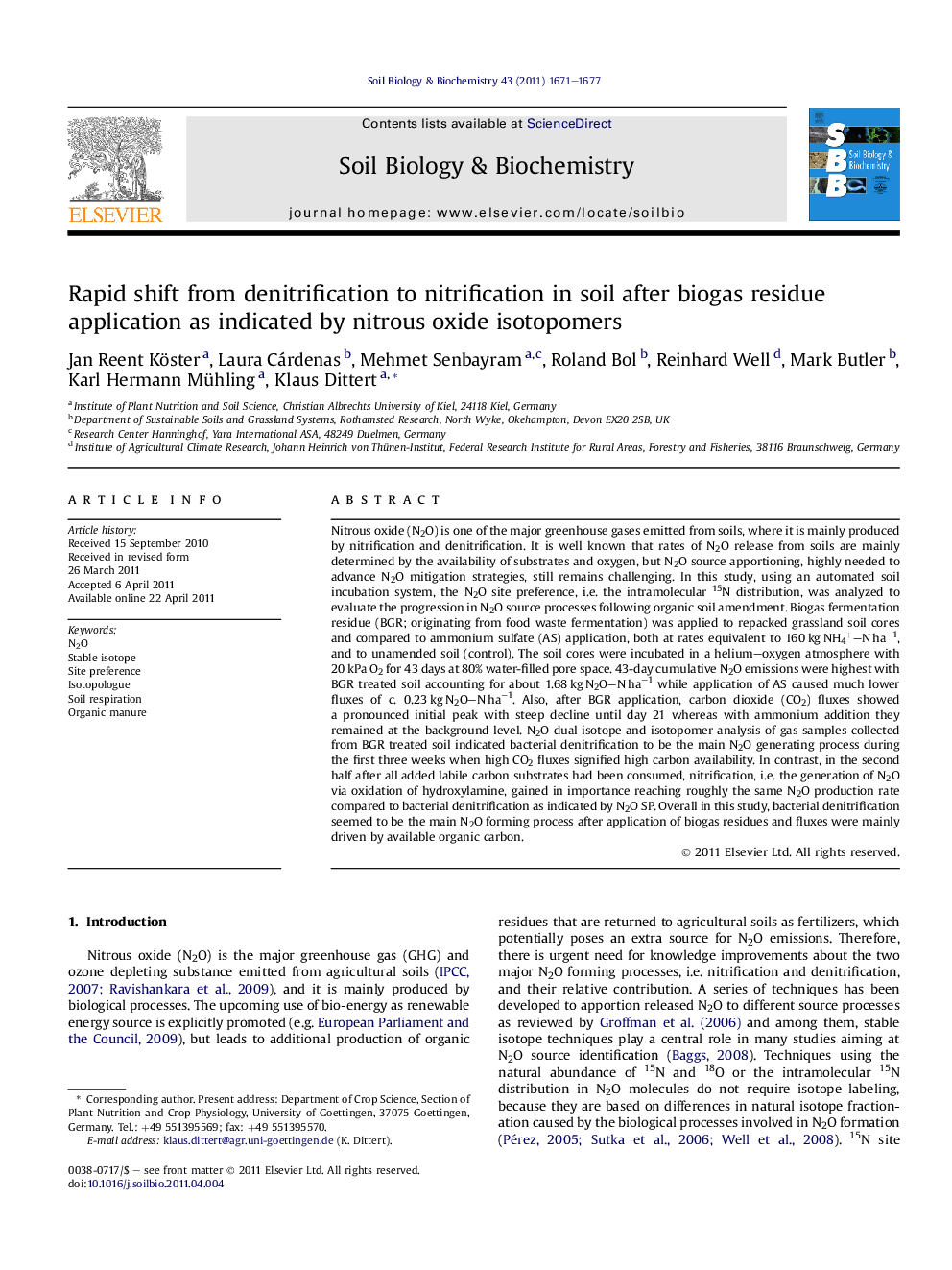| کد مقاله | کد نشریه | سال انتشار | مقاله انگلیسی | نسخه تمام متن |
|---|---|---|---|---|
| 2025105 | 1069981 | 2011 | 7 صفحه PDF | دانلود رایگان |

Nitrous oxide (N2O) is one of the major greenhouse gases emitted from soils, where it is mainly produced by nitrification and denitrification. It is well known that rates of N2O release from soils are mainly determined by the availability of substrates and oxygen, but N2O source apportioning, highly needed to advance N2O mitigation strategies, still remains challenging. In this study, using an automated soil incubation system, the N2O site preference, i.e. the intramolecular 15N distribution, was analyzed to evaluate the progression in N2O source processes following organic soil amendment. Biogas fermentation residue (BGR; originating from food waste fermentation) was applied to repacked grassland soil cores and compared to ammonium sulfate (AS) application, both at rates equivalent to 160 kg NH4+–N ha−1, and to unamended soil (control). The soil cores were incubated in a helium–oxygen atmosphere with 20 kPa O2 for 43 days at 80% water-filled pore space. 43-day cumulative N2O emissions were highest with BGR treated soil accounting for about 1.68 kg N2O–N ha−1 while application of AS caused much lower fluxes of c. 0.23 kg N2O–N ha−1. Also, after BGR application, carbon dioxide (CO2) fluxes showed a pronounced initial peak with steep decline until day 21 whereas with ammonium addition they remained at the background level. N2O dual isotope and isotopomer analysis of gas samples collected from BGR treated soil indicated bacterial denitrification to be the main N2O generating process during the first three weeks when high CO2 fluxes signified high carbon availability. In contrast, in the second half after all added labile carbon substrates had been consumed, nitrification, i.e. the generation of N2O via oxidation of hydroxylamine, gained in importance reaching roughly the same N2O production rate compared to bacterial denitrification as indicated by N2O SP. Overall in this study, bacterial denitrification seemed to be the main N2O forming process after application of biogas residues and fluxes were mainly driven by available organic carbon.
► Isotopomers reveal rapid shift from denitrification as N2O source to nitrification.
► N2O production shifted from denitrification to nitrification after C depletion.
► Organic carbon availability is key factor for soil denitrification.
► To our knowledge the first isotopomer study covering a six week period.
Journal: Soil Biology and Biochemistry - Volume 43, Issue 8, August 2011, Pages 1671–1677